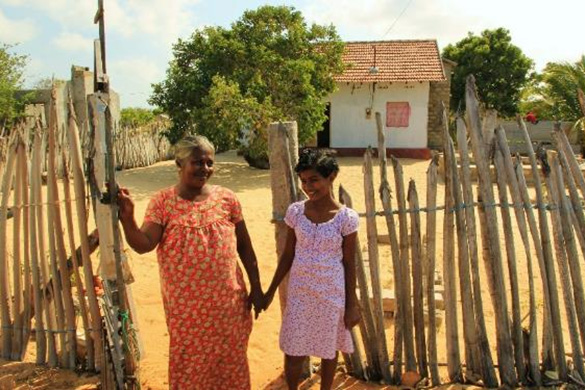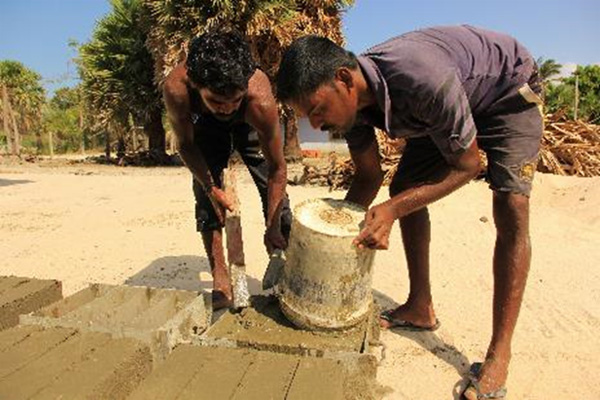UN-Habitat Completes 16,000 Houses under Government of India’s Grant Assistance in the North of Sri Lanka
 13th October 2015, Colombo, Sri Lanka: UN-Habitat Sri Lanka, with funding from the Government of India, has to-date supported 16,000 homeowners to complete their permanent houses in Sri Lanka’s Northern Province under the Indian Housing Project.
13th October 2015, Colombo, Sri Lanka: UN-Habitat Sri Lanka, with funding from the Government of India, has to-date supported 16,000 homeowners to complete their permanent houses in Sri Lanka’s Northern Province under the Indian Housing Project.
In June 2010, the Government of India, as part of its post-conflict rehabilitation support to Sri Lanka announced its intention to fund the construction of 50,000 houses. This project, with a grant of USD 250 million, is one of the largest international grant assistance projects undertaken by the Government of India. As a part of this programme, UN-Habitat is facilitating the construction and repair of 18,000 houses in the Northern Province. To date, UN-Habitat has supported 16,000 families to complete their houses and is aiming to complete the remainder by the end of 2015.
From October 2012, UN-Habitat has been implementing the project in the districts of Mullaitivu, Killinochchi and Jaffna. Using a ’homeowner driven’ approach, the project assists families to actively participate in the construction of their own houses. Homeowners plan, implement and monitor progress of their houses, while technical assistance including designs, Bills of Quantities and support in solving land tenure issues are provided by UN-Habitat. The project is implemented in close coordination with the Government of Sri Lanka and communities, following the highest standards of objectivity and transparency.
 Houses are constructed according to local authority guidelines and incorporate disaster risk reduction features to minimise the effects of natural disasters. Building materials are procured locally wherever possible, promoting the revival of local economies. Eco-friendly construction methods are actively promoted by
Houses are constructed according to local authority guidelines and incorporate disaster risk reduction features to minimise the effects of natural disasters. Building materials are procured locally wherever possible, promoting the revival of local economies. Eco-friendly construction methods are actively promoted by
UN-Habitat, including stabilised earth blocks, fair-faced cement blocks, waffle slabs, treated plantation timber and recycled building materials.
In the spirit of the homeowner driven process, the families contribute their own labour towards the reconstruction efforts. Communities are actively engaged in construction activities through Village Reconstruction Committees, who monitor progress and provide assistance to vulnerable homeowners. The role of women is actively promoted by the project, particularly in decision making and financial control.
Thousands of homeowners are now reaping the benefits of their newly constructed homes. This project is helping conflict affected families to fulfill their needs and expectations following years of conflict and displacement.
